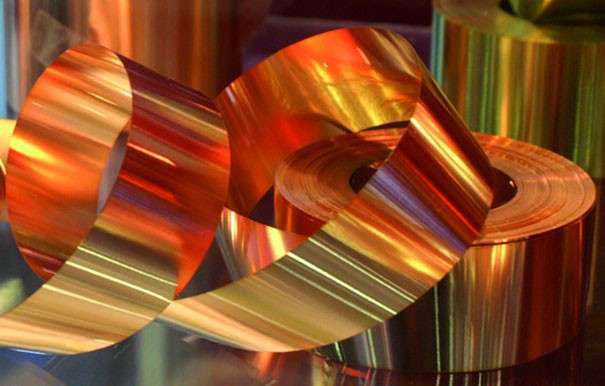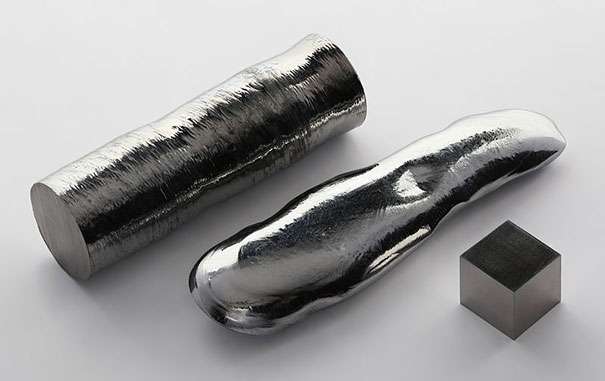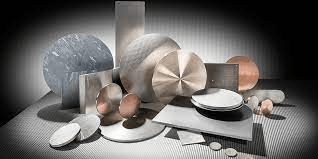Unfortunately, the ancient masters did not leave descriptions of the methods of processing alloys and information about what their composition was. But in ancient times, people already knew how to work with alloys and make various objects from them. Such literature can be found dating back to the Middle Ages, however, these sources are quite difficult to decipher in order to understand all the terminology and names of the alloys. Therefore, information about the composition of the metal alloys of a particular object can currently only be obtained on the basis of the things themselves: ancient tools, weapons, jewelry, coins, dishes.
An alloy is a macroscopic homogeneous system consisting of two or more metals (sometimes it can be metals and non-metals) that have characteristic metallic properties. In other words, an alloy is any homogeneous system obtained by the fusion of metals, non-metals or organic compounds. Examples of metal alloys: steel, bronze, cast iron. They differ from pure metals in their properties – strength, hardness, electrical resistance.

There are various types of metal alloys. Which type each particular alloy belongs to can be determined based on the following factors:
-
The nature of the metal that is the base in the alloy:
-
Number of components:
-
Properties:
-
Structure:
-
Alloy production technology:
Alloy properties
The properties of alloys are affected not only by their composition, but also by the methods of mechanical and heat treatment. Back in the 19th century, new practically useful alloys were searched for by trial and error, also learning to distinguish metals from non-metals. And only at the end of the 19th and beginning of the 20th centuries, metal alloys and their properties were studied more deeply thanks to fundamental discoveries in the field of physical chemistry.
In metallurgy, there are the following types of alloys:
- Chemical compound. (It is formed as a result of chemical interaction).
- solid solution. (The atoms that make up the alloy form a common crystal lattice).
- mechanical mixture. (Characterized by independent crystallization of each element of the alloy).
Mechanical properties of alloys
The main mechanical properties are viscosity, ductility, strength, creep, hardness, wear resistance, endurance. These are the main characteristics of all metal alloys.
Physical properties
The physical properties of alloys include specific gravity, electrical conductivity, coefficients of volumetric and linear expansion, thermal conductivity, melting point, and weldability.
Chemical properties of alloys
The chemical resistance of alloys and metals is determined by their ability to resist the chemical effects of various aggressive environments. A typical example of chemical action is the process of corrosion (oxidation of metals).
Video about metal alloys and their properties
The structure of metal alloys
The main element of a metal alloy determines the crystallographic structure of this alloy with its atomic lattice. All other elements in relation to the main are impurities. Thus, the structure of metal alloys can be considered using the example of steel: its crystallographic structure is determined by the crystallographic lattice of iron, which is why this glory is called steel. If, among the elements that make up the alloy, the crystal lattice is formed not by iron, but, for example, by cobalt or nickel, then the alloy will be cobalt or nickel.
Pure metals always have a simpler structure than alloys. The structure of metal alloys and the transformations occurring in them are studied by various research methods.
The vast majority of metal alloys have a crystalline structure, and the characteristic of the properties of metal alloys is the same as the characteristic of the properties of metals. At present, the structure of metal alloys is studied using radiographic methods and X-ray analysis.
Amorphous metal alloys
Amorphous metal alloys are alloys and metals whose atoms have a random arrangement. The properties of amorphous metals differ significantly from the properties that are inherent in metal crystals, in which the atoms are arranged in an orderly manner.
During the formation of an amorphous structure of an alloy, fundamental changes occur in such properties as electrical, magnetic, mechanical, superconducting, and others. Some of them are of great interest both for practice and for science.

Amorphous alloys have very high corrosion resistance, magnetic permeability, hardness, strength and, at the same time, high fracture toughness.
Thus, it can be concluded that amorphous metallic glasses have good mechanical properties. However, despite this, they are not used for the manufacture of critical structural parts, since they are expensive and have a complex production technology.
